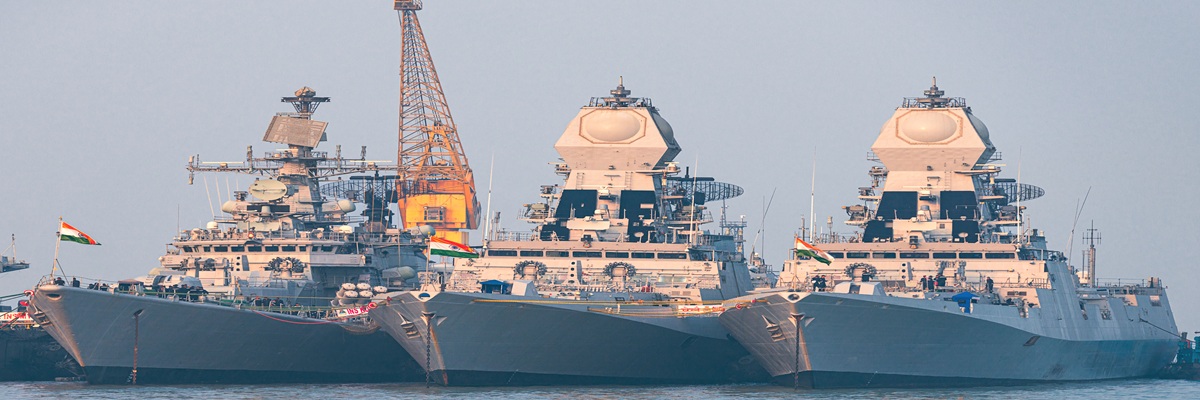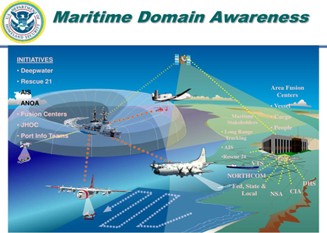Defense & Security
India-China Rivalry After Galwan: Is the Maritime Front the Next Flashpoint?

Image Source : Shutterstock
Subscribe to our weekly newsletters for free
If you want to subscribe to World & New World Newsletter, please enter
your e-mail
Defense & Security

Image Source : Shutterstock
First Published in: Oct.27,2025
Oct.27, 2025
The Galwan Valley clash (Reuters, 2024) of 15 June 2020 pushed South Asian strategic thinking: competition with Beijing is no longer a single-theatre rivalry. Having pressed advantage on land where it achieved asymmetric leverage, Beijing is increasingly pressing seaward —expanding capability for naval reach and overseas logistics and calibrated “grey-zone” maritime tools —and India must consider the Indian Ocean (Bhatt, 2024) as an equal front of competition if it is to prevent everyday coercion at sea from becoming the region's next crisis.
Galwan was a tactical clash whose political and strategic reverberations were felt far beyond Ladakh. New Delhi's post-Galwan posture has not only involved fortified mountain deployments but also renewed emphasis on the Indian Ocean. Beijing's investments in port development, logistics, and longer-range naval capability augment its capacity to influence sea lines of communication that India depends on for trade and energy. Analysts have documented China's growing dual-use presence and stronger commercial ties in littoral states —a geo-economic underpinning to expanding naval reach.
At sea, Beijing prefers calibrated coercion. The People’s Armed Forces Maritime Militia (PAFMM), the China Coast Guard, and the PLAN all operate together to create facts on the water, remaining below the threshold of conventional war. Open-source research shows an increase in militia vessels (CSIS, 2024) linked to Hainan frequent coast guard harassment in contested seas, while overseas logistics and basing (from Djibouti to commercial port arrangements) potential to sustain persistent presence and surge capacity all represent separate components of modern grey-zone strategy. According to the theory of irredentism, China's approach is not unprecedented. In the South China Sea, Beijing has mixed coast guard surveillance, militia swarming, and slow incremental land reclamation to generate facts on the ground and created continued friction with Vietnam (the Paracel and Spratly Islands) and with the Philippines (the 2012 Scarborough Shoal standoff). These examples show how calibrated maritime coercion can cumulatively shift the status quo without descending into outright war.
New Delhi has not been idle. The Indian Navy has stepped up its ship and submarine building program, increased patrols of chokepoints, and participated in enhanced joint exercises with partners to signal that it is serious about maintaining a presence in the Indian Ocean (Maqbool & Sharma, 2025). It has also modernized the Coast Guard and MDA networks on the Indian side of the Indian Ocean while developing diplomatic engagement with littoral states to present choices in preference to unilateral submission. Taken together, these actions demonstrate an appreciation that presence matters, as do allied cooperation and indigenous capability. Moreover, India’s maritime capabilities face significant constraints. Its defence budget is far smaller than China’s (India: ~$72 billion vs. China: ~$224 billion in 2023) (Tian, Lopes da Silva, Liang, & Scarazzato, 2024), and its naval share of the defence budget has declined in recent years. India continues to depend heavily on foreign arms imports—Russia alone supplies over 45% of India’s major arms purchases. Additionally, India lacks a network of overseas logistics facilities comparable to China’s “String of Pearls,” (Devonshire-Ellis, 2009) which includes Djibouti, Gwadar, and Hambantota. These vulnerabilities limit India’s ability to sustain prolonged operations far from home ports.
While ASEAN as an institution often struggles with consensus on China, its member states—such as Vietnam, Indonesia, and the Philippines—share India’s concerns about grey-zone coercion. Building issue-based coalitions with these countries could complement Quad initiatives, especially in areas like coast guard training, joint patrols, and legal capacity building.
The ocean's crowded and invisible environment creates acute risk: commercial shipping, fishing boats, coast guards, and naval vessels can operate close together, so what would be an ordinary event raises the stakes into a crisis risk when a coordinated actor exerts calibrated pressure. The ongoing investigations and research writing often discuss militia swarms, Automatic Identification System (AIS) (United States Coast Guard US Department of Homeland Security, s.f.) shutdowns, and coast guard shadows that result in risky close-quarters interactions—where a collision, boarding, or injury can simply become a theatre of escalation to a strategic crisis (VOA, 2023). India is already seeing episodes of this type, and if there is no recognition of what is happening, they risk becoming normalized tactics compared to an episodic problem.
A maritime Galwan—where an ordinary event becomes an escalation to strategic crisis—needs three conditions: improve detection and attribution, broaden regional engagement to build resilience, and deliver credible costs for repeat coercion. Preparation (detection & attribution): India needs to integrate naval, coast-guard and civilian surveillance into a Maritime Domain Awareness (MDA) (IMO, s.f.) architecture that uses spaceborne and underwater sensors, development of standard incident reporting, and speedier protocols for attribution. Preventing or stopping massing of vessels, or identified AIS-indoctrination, is self-deterrent: it removes ambiguity and allows for calibrated, defensible legal responses. This is clear from the RAND’s local security claim —where robust MDA remains the first line of defence in grey-zone contests.

Partner (regional resilience): Operationalize partnerships (the Quad, IORA, and bilateral frameworks) to provide coast-guard capacity building, legal assistance, and situational awareness support to vulnerable island and littoral states, and reduce the pool of permissive ports, and strengthen partner enforcement to deny coercive actors easy safe havens, and build diplomatic coalitions so they can be publicly isolated. Penalty (raise costs): India should lead a regional initiative to criminalize deliberate AIS disabling, ship ramming, and state-backed commercial harassment and develop rules with targeted diplomatic and economic penalties for repeat offenders. Purposeful, independently verified documentation of incidents will make penalties credible and raise the political cost of grey-zone campaigns.
Specific operational measures include increased coast-guard rapid-response flotillas; more pre-positioned mobile logistics to reduce reliance on distant basing; institutionalizing joint exercises designed to practice non-lethal harassment and gather evidence; and creating a regional maritime incident task force to investigate and publicize coercive acts. These operational measures will raise the expense of coercive campaigns without necessitating an extraordinary expansion of fleets.
Galwan has imparted a painful lesson to South Asia that rivalry can jump sectors and cause true damage, when states over-reach. In the maritime domain, Beijing can exploit some ambiguity to use coercive measures that are lower cost. India must likewise extend its vigilance and monitoring from the Himalayas to the high seas. However, this is not simply a story of vulnerability: India can use strong Maritime Domain Awareness, increasingly engage with ASEAN and Quad partners, and implement selective measures to raise the costs for coercion to tilt the opportunity to develop norms in the region. The challenge is serious, but the sea does not have to be the next flashpoint or crisis, with alliances and adapting strategy in mind.
Bhatt, P. (2024, 06 16). From the Mountains to the Seas: India-China Competition in the Wake of Galwan. Retrieved from Stimson: https://www.stimson.org/2024/from-the-mountains-to-the-seas-india-china-competition-in-the-wake-of-galwan/ CSIS. (2024, 12 12). Behind the Curtain: An Update on Hainan’s Maritime Militia. Retrieved from Asia Maritime Transparency Initiative: https://amti.csis.org/behind-the-curtain-an-update-on-hainans-maritime-militia/ Devonshire-Ellis, C. (2009, 03 18). China’s String of Pearls Strategy. Retrieved from China Briefing: https://www.china-briefing.com/news/china%E2%80%99s-string-of-pearls-strategy/ IMO. (n.d.). Maritime Domain Awareness. Retrieved from International Maritime Organization: https://www.imo.org/en/ourwork/security/pages/maritime-domain-awareness.aspx Maqbool, R., & Sharma, A. (2025, 01 15). India’s navy launches submarine, warships to guard against China’s presence in Indian Ocean. Retrieved from AP News: https://apnews.com/article/india-navy-submarine-warships-launch-69c138048bb4202a1a409b0b2353a2f4 Reuters. (2024, 10 25). What was the India-China military clash in 2020 about? Retrieved from Reuters: https://www.reuters.com/world/asia-pacific/what-was-india-china-military-clash-2020-about-2024-10-25/ Tian, N., Lopes da Silva, D., Liang, X., & Scarazzato, L. (2024, 04). Trends in world military expenditure, 2023. Retrieved from SIPRI: https://www.sipri.org/sites/default/files/2024-04/2404_fs_milex_2023.pdf United States Coast Guard US Department of Homeland Security. (n.d.). Automatic Identification System (AIS) Overview. Retrieved from Navigation Center: https://www.navcen.uscg.gov/automatic-identification-system-overview VOA. (2023, 05 09). Chinese Militia Boats Cross Indian, ASEAN Warships Exercising in South China Sea. Retrieved from VOA: https://www.voanews.com/a/chinese-militia-boats-cross-indian-asean-warships-exercising-in-south-china-sea-/7085847.html
First published in :
World & New World Journal

Muhammad Salman is graduate scholar of International Relations at the National University of Modern Languages (NUML), Islamabad, and currently serves as a research assistant intern at the UAE-based think tank, Global Strategam Insights (GSI). My academic and research interests focus on Asian geopolitics, the international political economy, territorial disputes in the South China Sea, the rise of China, and U.S. foreign policy in the Asia-Pacific region. I have authored several research papers and articles.

Muhammad Umar Nasir Is a BS International Relations student at NUML, Islamabad. My research interests include South Asian politics, climate security, and regional cooperation. I have interned at The Asian Politico, joined fellowships, and completed certified courses in research, climate change, and digital skills.
Unlock articles by signing up or logging in.
Become a member for unrestricted reading!